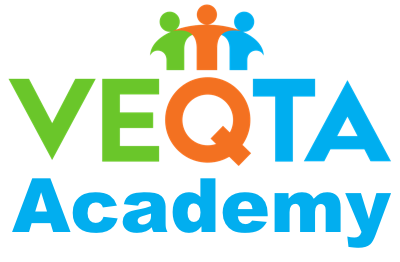The LMM is a framework that helps organizations gauge the maturity of their localization processes. It allows companies to understand their current standing, what challenges they might be facing, and what steps they need to take to advance their localization efforts.
Broadly speaking, the LMM can be envisioned as a continuum. At one end, we have companies that are just starting out — they might be translating content in an ad-hoc manner, without any established processes. These organizations often face challenges like inconsistent messaging, potential cultural missteps, and inefficiencies in managing translations. They are at the ‘reactive’ stage, responding to immediate needs without a clear strategy.
As companies move along the maturity model, they start establishing more formalized processes. This might involve hiring dedicated localization teams, collaborating with specialized agencies, and investing in advanced tools and technologies. They transition to a more ‘organized’ stage, where the focus shifts from mere translation to genuine localization, encompassing all elements of their product or service to ensure it’s tailor-made for each target market.
Progressing further, organizations begin to align their localization strategies with their broader business goals. At this ‘mature’ stage, they not only have efficient processes in place but also measure the ROI of their localization efforts, refining their approach based on data-driven insights. This is a transformative phase, where localization is no longer seen as an afterthought but as a strategic imperative that drives growth.
Finally, at the pinnacle of the LMM, we find organizations that have fully integrated localization into their DNA. These ‘world-class’ companies view every business decision through the lens of localization, ensuring that they are always poised to deliver a locally resonant and globally consistent experience.
For procurers of translation services, understanding the LMM is crucial. It’s not just about finding a service provider who can translate content. It’s about partnering with an agency that understands where you stand on the maturity model, can guide you along that journey, and possesses the expertise and tools to help you reach the next stage. As the saying goes, “What gets measured gets improved.” And by measuring localization maturity, companies can chart a clear path to global success, ensuring that their message not only reaches but truly resonates with audiences around the world.
In conclusion, the Localization Maturity Model is more than just a measure of translation prowess. It’s a roadmap for companies to navigate the intricate world of localization, ensuring that they not only speak the language of their audience but also understand and respect their culture, values, and preferences. As businesses look to expand their global footprint, leveraging the insights of the LMM will be indispensable in crafting a truly global yet locally nuanced strategy.
The Localization Maturity Model (LMM) and its technical application.
The LMM was designed to provide a systematic approach to assessing, benchmarking, and improving localization processes. It defines a set of stages that a company progresses through as they enhance their localization efforts.
- The Stages of the LMM
- Ad Hoc: At this initial stage, there’s no defined process. Translation tasks are managed on a case-by-case basis, often in response to immediate needs. There’s limited understanding or recognition of the value of localization.
- Repeatable: Organizations have some consistent processes in place, although they might not be formalized. Some tools may be used, but they might not be specialized for localization.
- Managed: At this point, companies have more structured processes. They might have a dedicated localization team or a partnership with a localization service provider. They begin using specialized tools like Translation Management Systems (TMS) and establish some basic key performance indicators (KPIs).
- Optimized: Companies at this stage have well-defined processes, and there’s a clear strategy linking localization efforts to business goals. They measure the ROI of their localization efforts and refine their approach based on data-driven insights.
- Transparent: The highest maturity level, where localization is seamlessly integrated into all business operations. Every business decision considers localization, and there’s a focus on continuous improvement, with regular reviews and refinements of processes.
- Key Components of the LMM
- Process: At the core of the LMM is the idea that processes need to evolve from ad hoc reactions to methodical, optimized workflows.
- Organizational Structure: This pertains to how the localization team is set up, whether there’s a dedicated in-house team, collaboration with agencies, or a mix of both.
- Technology: As companies mature in the LMM, the role of technology becomes crucial. This involves tools for translation memory, automation, quality assurance, and analytics.
- KPIs and Metrics: These are essential for measuring the success of localization efforts. Examples include localization ROI, translation quality scores, and time-to-market in new regions.
- Using the LMM
- To utilize the LMM:
- Assessment: Begin by assessing where your company currently stands. This can involve internal audits or partnering with a consultancy that specializes in LMM assessments.
- Setting Objectives: Based on the assessment, define clear objectives. For instance, if you’re at the ‘Repeatable’ stage, your goal might be to progress to the ‘Managed’ stage in a year.
- Resource Allocation: Depending on your objectives, allocate resources – this could mean hiring localization specialists, investing in new tools, or undergoing training.
- Implementation: Put the plan into action. If the objective was to use a TMS, this is the stage where it’s implemented.
- To utilize the LMM:
Review: Regularly review progress. Are you meeting the objectives set? If not, what are the challenges? Adjust the strategy accordingly.
In essence, when a company owner looks at the LMM, they should see a clear pathway from fragmented, inconsistent localization practices to a well-oiled machine where localization is an integral part of business strategy. The LMM provides the framework, benchmarks, and guidelines to navigate this journey, ensuring that businesses can effectively connect with global audiences in a meaningful way.




